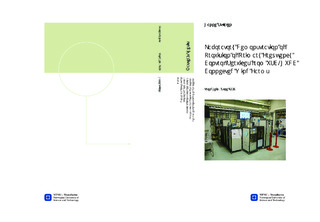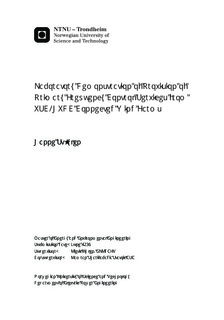| dc.description.abstract | Frequency control is a particularly significant issue with high levels of rotating generating units interfaced with power electronics in the power system. Since the power electronic converter decouples the generating unit from the grid, the generating unit will not inherently participate in the regulation of grid frequency. This is often referred to as a reduction of the system inertia. A lower level of system inertia leads to a worsened frequency response following an imbalance between power generation and load. With an increasing integration of renewable energy, and a growing interest in power transmission technologies that require power electronic interfaces such as HVDC, it is likely that grid operators will require services such as inertia provision from future HVDC-VSC connected power plants.In this thesis a communication-less method for obtaining inertial response from a HVDC-VSC connected wind farm is proposed and verified experimentally. An induction motor-generation set is used as a wind farm equivalent and a synchronous generator together with a transmission line equivalent is used to represent a weak AC grid. The wind farm equivalent and the weak grid are interconnected through a DC network using two VSC converters. The DC cables are modelled as resistances. Some simplifications are made regarding modelling of the wind farm. The objective of the work is to enhance the frequency control in the weak grid following a disturbance in the power balance by emulating an inertial response from the HVDC-VSC connected wind farm. This is done by implementing additional controls in the VSC converter terminals. The approach provides a coupling of the inertia of the wind turbines and the weak grid. During frequency changes in the weak grid, the wind farm equivalent will absorb or release kinetic energy. This behaviour is referred to as inertial response. In addition to the laboratory model, a Matlab/Simulink model is developed for comparison purposes and for evaluating the effect of changing key parameters in the proposed control system.The results show that the inertial response from the wind farm has a beneficial impact on the frequency response in the weak grid during the transient event following a power imbalance. The wind farm equivalent is able to modify the frequency low-point and the time at which it occurs. In the best case the first frequency dip is reduced from 3.7 Hz to 2.5 Hz, which corresponds to an improvement of 48.2 % based on the steady-state frequency deviation. The first dip is also delayed in time with approximately 1.3 seconds, compared to base case. In addition, the effect of varying control system parameters was extensively investigated. It is found that the main constraint to the amount of inertial support possible to obtain in the laboratory model is the stability of the system. Also, the performance of the controls is limited by significant time delays associated with filtering. Further studies should investigate the possibility of adding an additional VSC terminal to the DC network. Also, some thought should be put into methods to increase the efficiency of the control system by for instance reducing the filter time constants. In addition, an optimization of key control parameters and the combination of these, should be made. | nb_NO |

